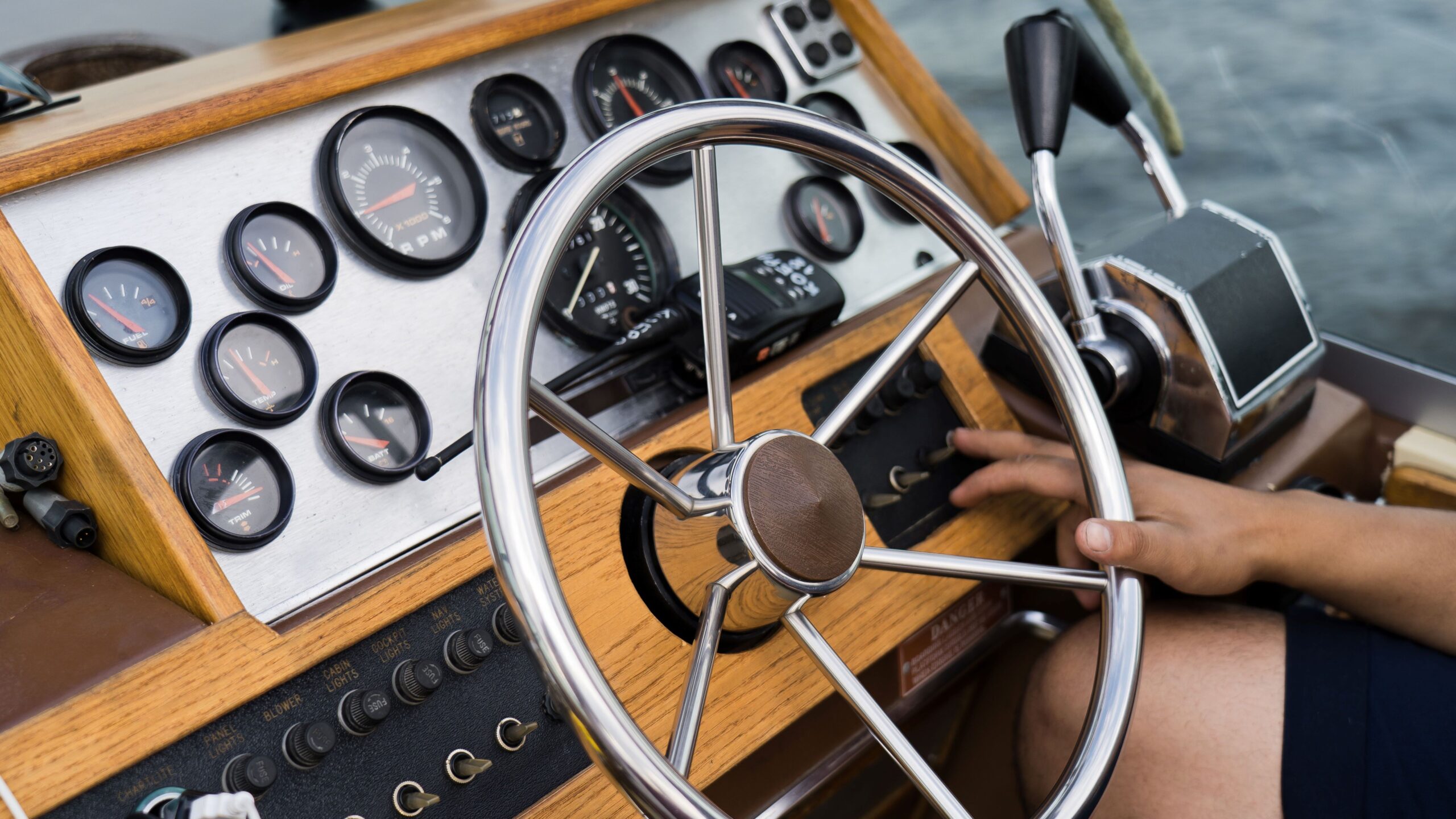When it comes to boating, safety and security are always top priorities. Whether you’re docked at a marina or sailing far offshore, having an effective alert system can make all the difference. One increasingly popular solution is installing a discreet audible device on your boat. These little sound systems can warn off potential intruders, alert you to emergencies, or simply give you peace of mind. But how exactly do you install one without turning your boat into a noisy mess? Let’s dive into everything you need to know about discreet audible devices, from choosing the right model to installation tips and best practices.
Why You Need a Discreet Audible Device on Your Boat
Boats are unique possessions that often spend a lot of time unattended, whether docked at a busy marina or anchored in a remote cove. Because of this, they naturally attract attention—not always the kind you want. Even if you consider yourself a cautious boat owner, it’s important to recognize that boats can be tempting targets for theft, vandalism, or accidental damage. Unlike cars parked in a driveway, boats often lack constant supervision, making them vulnerable. A discreet audible device acts as an early warning system, quietly safeguarding your vessel without creating unnecessary noise that could disturb others nearby or onboard.
One of the biggest advantages of such devices is their subtlety. Unlike traditional loud alarms that can be jarring or disruptive, discreet audible devices emit carefully calibrated sounds designed to alert only those who need to hear them. This means you can protect your boat without turning it into a noisy nuisance. Whether you’re anchored near neighbors or sharing a marina slip, a discreet alert system keeps things peaceful while still maintaining an effective layer of security.
Moreover, these devices don’t just deter potential thieves; they can provide instant notifications for a variety of emergencies. Imagine being alerted immediately if someone tries to board your boat without permission, or if your engine starts overheating while you’re below deck. In situations like a fire or flooding, an audible alert can give you crucial extra seconds to respond before the problem worsens. It’s like having a vigilant guardian quietly watching over your boat, ready to sound the alarm when something’s wrong.
Ultimately, installing a discreet audible device on your boat gives you peace of mind. It’s reassuring to know that even when you’re miles away or fast asleep, your boat is protected by a system designed to alert you discreetly but effectively. This balance of security and subtlety is why more and more boat owners are choosing these devices as part of their overall safety setup.
What is a Discreet Audible Device?
| Feature | Description | Purpose | Common Sound Types | Benefits |
| Sound Intensity | Emits lower-volume signals compared to traditional alarms | To avoid disturbing others nearby | Buzzers, chimes, soft tones | Non-intrusive alerts that won’t annoy neighbors or crew |
| Design & Size | Compact and often hidden within boat panels or equipment | To remain out of sight and discreet | Small piezo speakers, buzzers | Easy to install and maintain without cluttering space |
| Alert Specificity | Produces unique sounds that signal particular events | To communicate specific warnings | Different tones for different alerts | Clear communication without confusion or false alarms |
| Power Consumption | Uses minimal energy, often battery or boat electrical system powered | To conserve boat’s power supply | Low wattage electronic buzzers | Long-lasting operation with minimal battery drain |
| Environmental Protection | Built to withstand harsh marine environments | To ensure durability and reliability | Waterproof, corrosion-resistant casings | Reliable function even in salty, wet, and windy conditions |
Types of Audible Devices for Boats
When it comes to choosing an audible device for your boat, there are several popular types to consider. Each type offers different benefits and drawbacks, so it’s important to pick one that fits your specific needs and the setup of your boat. Here’s a detailed look at the main types of audible devices used in marine environments:
- Piezo Buzzers
These are small electronic buzzers that produce simple beeping sounds. They are compact, consume very little power, and tend to be affordable, making them a popular choice for smaller boats or as secondary alert systems. However, their sound range is limited, and the beeps can sometimes be too quiet to hear in noisy conditions, which could reduce their effectiveness in some situations. - Tone Generators
Tone generators emit various tones or chimes rather than simple beeps. This makes them versatile since you can customize the sounds to signal different alerts or events. Their ability to create different sound patterns helps avoid confusion and can provide clearer communication. The downside is that tone generators typically require a stable power source and might be more complex to install compared to simple buzzers. - Siren Alarms
Siren alarms are the classic loud and piercing alarms designed to scare off intruders or alert people quickly. They are very effective deterrents because of their intensity and the immediate attention they command. However, sirens can be loud and intrusive, potentially disturbing neighbors or the boat’s occupants unnecessarily. For this reason, they might not be ideal for all boating environments, especially in close quarters like marinas. - Speaker Systems
More advanced than simple buzzers or sirens, speaker systems can play recorded messages or customized alerts. They provide high sound clarity and can be programmed to convey specific instructions or warnings. While these systems offer excellent versatility and professionalism, they require more complicated installation and integration into the boat’s electrical system. They also tend to be more expensive. - Vibration Alerts
These devices don’t rely on sound but instead use silent vibrations that can be felt by the crew or owner, often through wearable devices or specific mounting points on the boat. Vibration alerts are extremely discreet and won’t disturb anyone else, making them perfect for private notifications. However, since they are not audible, they only work as supplementary alerts and require the user to be in physical contact with the device.
Assess Your Boat’s Needs
Before rushing to purchase an audible device for your boat, it’s essential to take a step back and thoroughly evaluate your specific needs. Every boat is different—not only in size but also in layout and how it’s used. For example, a small fishing boat has very different alert requirements than a large motor yacht or a houseboat. Understanding where on your boat you most need alerts is critical because placing the device in the right location can mean the difference between an effective warning and a missed signal. Whether it’s the cabin, cockpit, or engine room, identifying key areas ensures your alert system covers the spots where trouble is most likely or where immediate attention is needed.
Another important consideration is the volume of the alert. You don’t want an alarm so loud that it startles your crew or annoys your marina neighbors, but it has to be audible enough to catch your attention in noisy conditions or from a distance. Striking the right balance is a fine art that depends on your environment and usage. For instance, if you often anchor near other boats, discreet, lower-volume alerts might be preferable. But if you’re sailing solo in open waters, louder warnings could be necessary to keep you safe.
Next, think about whether you want remote notification capabilities. Modern audible devices can sometimes connect to your smartphone or onboard monitoring systems, sending alerts even when you’re not physically on the boat. This feature can add a huge layer of security and convenience, especially if you dock your boat at a busy marina or leave it unattended for periods. However, integrating remote notifications usually requires more advanced technology and may need a steady power supply or network connection, which should be factored into your overall plan.
Finally, consider practical constraints like power availability and weather resistance. Boats have limited electrical capacity, and adding new devices means you must ensure your system can handle the extra load without draining batteries or causing malfunctions. Weatherproofing is just as critical—marine environments are harsh, with saltwater spray, humidity, and temperature changes that can quickly damage non-protected electronics. Picking a device designed specifically for marine use with strong waterproofing and corrosion resistance will save you money and headaches in the long run. Taking the time to assess these factors thoroughly will help you choose a discreet audible device that fits your boat perfectly and works reliably whenever you need it.
Choose the Right Audible Device
| Criteria | Description | Why It Matters | What to Look For | Impact on Boat Security |
| Size | The physical dimensions and weight of the device | Smaller devices are easier to conceal and handle | Compact form factor, lightweight | Keeps the device discreet and saves space onboard |
| Power Source Compatibility | How the device is powered (battery, boat electrical system) | Ensures continuous operation without power issues | Compatibility with 12V/24V systems, rechargeable batteries | Reliable alerts without draining boat’s main power |
| Sound Customization | Ability to adjust tones, volume, and alert patterns | Allows tailored alerts for different situations | Multiple tone options, adjustable volume control | Clear and distinguishable alerts reduce false alarms |
| Weatherproofing | Resistance to water, salt, humidity, and corrosion | Essential for durability in harsh marine conditions | IP67 or higher rating, corrosion-resistant casing | Device longevity and reliable performance in all weather |
| Remote Monitoring | Capability to send alerts to smartphones or remote devices | Enables notifications even when away from the boat | Wireless connectivity, app support, SMS alerts | Increased security with instant remote notifications |
Gather Installation Tools and Supplies
Preparing for the installation of your discreet audible device means having the right tools and materials at your fingertips. Being well-equipped can save you a lot of time, avoid frustration, and help you achieve a neat, professional result. Here’s a detailed list of everything you should gather before you start:
- Screwdrivers (both flathead and Phillips): Essential for removing and securing screws when mounting the device or opening panels.
- Drill with waterproof-rated drill bits: You’ll need a reliable drill for making mounting holes; waterproof-rated bits resist corrosion in marine environments.
- Wire strippers and cutters: These help you strip insulation cleanly from wires and cut cables to the right length for connections.
- Marine-grade electrical connectors: Corrosion-resistant connectors are crucial for making solid, long-lasting electrical connections that withstand salty, wet conditions.
- Marine-grade electrical tape: Specifically designed to resist moisture and salt, this tape helps seal and protect wiring joints.
- Mounting brackets, screws, or adhesive pads: Many devices come with mounting hardware, but having extra brackets or strong adhesive pads can give you flexible mounting options.
- Multimeter: This handy tool lets you measure voltage, check continuity, and ensure your wiring is correct before powering the device.
- Cable ties and clips: Use these to organize and secure wiring neatly along your boat’s surfaces, preventing tangles and chafing.
- Silicone sealant or marine-grade sealant: Applying sealant around screw holes and wiring entrances prevents water ingress and keeps everything watertight.
- Safety gear: Don’t forget gloves and safety glasses, especially when drilling or handling electrical components.
- Instruction manual or wiring diagram: Keep the device’s installation guide handy for reference to ensure correct wiring and placement.
- Battery or power source check tools: Tools or testers to confirm your boat’s power system can support the device without issues.

